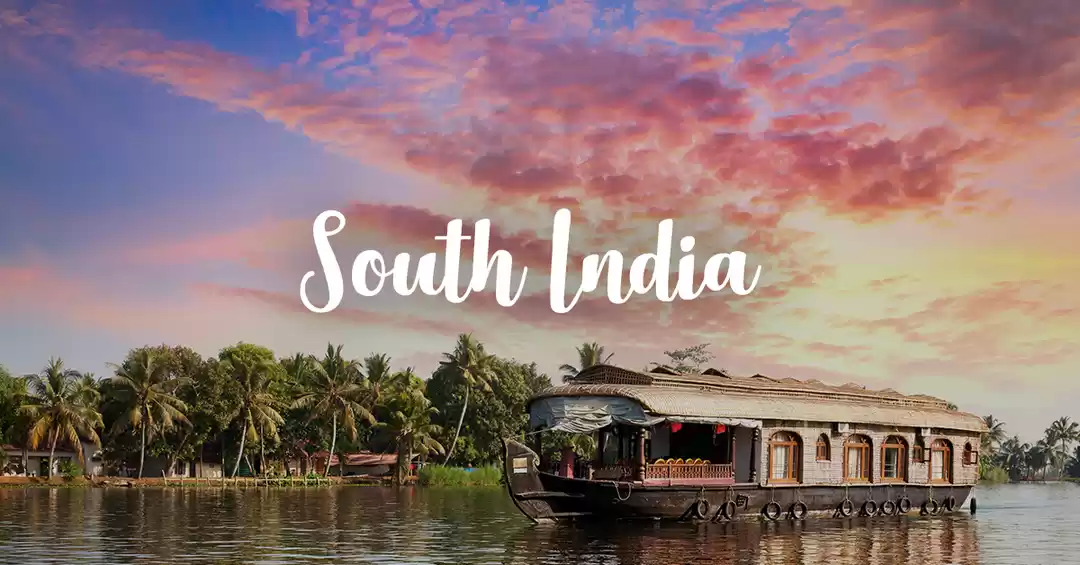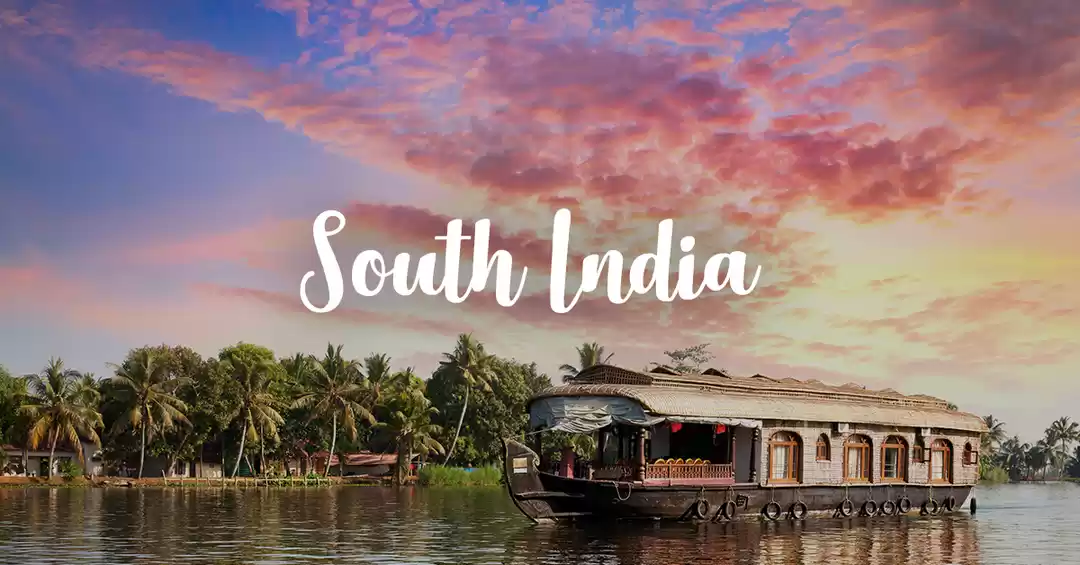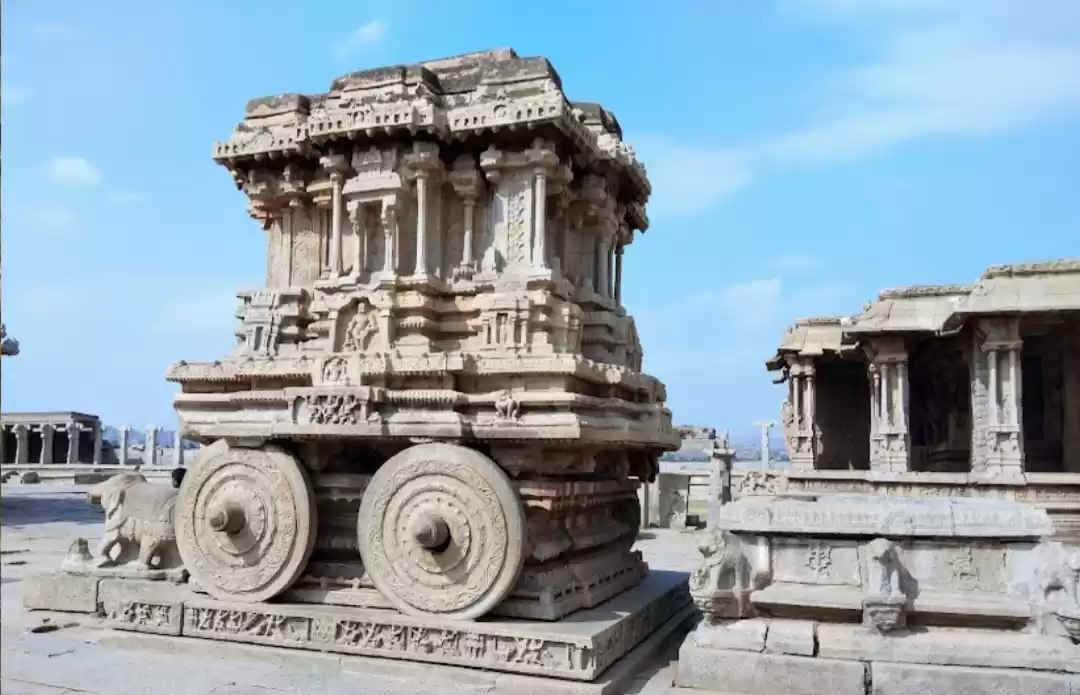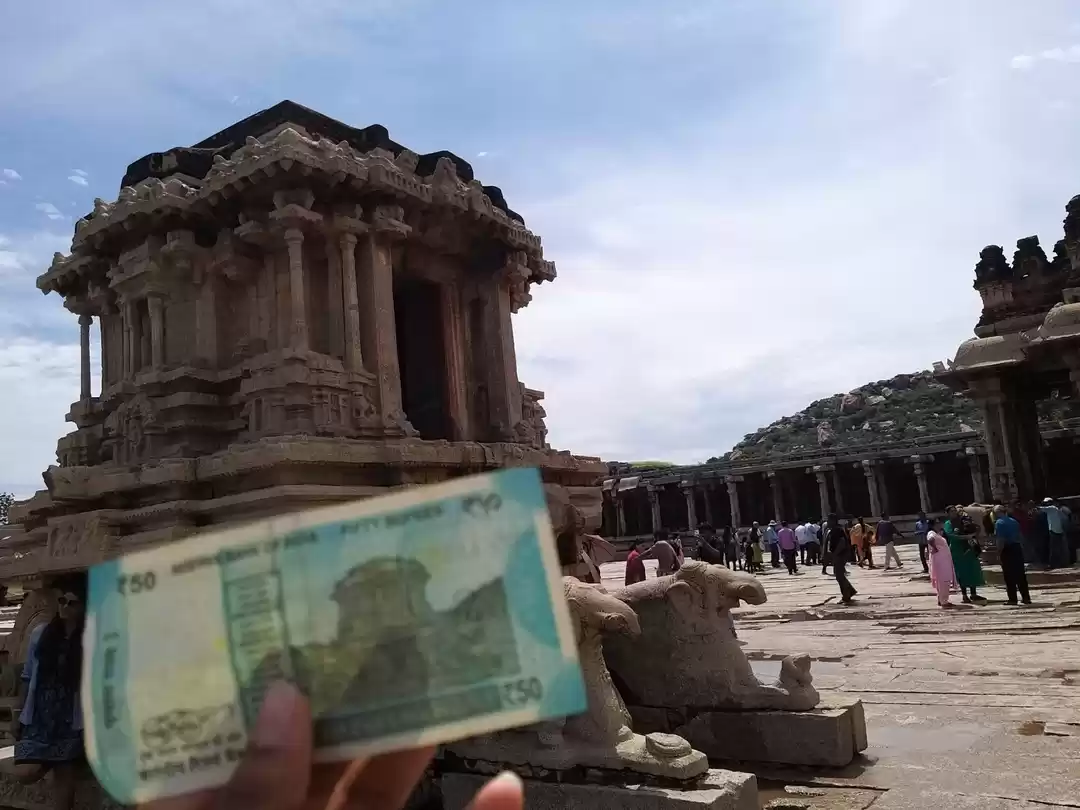
On 8th February,2023 we started for Bengaluru by road taking the coastal route with halts in Ganpatipule, Gokarna, Kannur and Guruvayur. Then moving away from the coast we visited Mudumalai and Ooty before reaching Bengaluru on 15th night. After attending a family function, we returned to Mumbai on 18th February taking the National Highway 48 with a halt in Hampi - a fascinating amalgamation of mythology, history and unique natural landscape. It was declared one of the UNESCO world heritage sites in 1986, though sadly under endangered category and ranked second in New York Times' must-visit destination list for 2019.
We started from Bengaluru at 10 am. Previous two days were very hectic and the night before I slept at around 2 pm. Prior to that we were on road for more than a week. Perhaps all that resulted in my feeling unwell that day with an upset stomach. Thankfully the road was good and the journey was comfortable. After driving for almost three hours we stopped at a roadside eatery "Sai Cafe" which was a really nice place with a beautiful outdoor seating area and well-maintained washrooms. I had no appetite and just had water melon juice. As we neared Hosapete, nearest township to Hampi on the highway, huge fans of wind mills started dominating the roadside. Against the blue sky, it made for a beautiful scene. It was 4 pm when we reached the parking place near Virupaksha temple in Hampi.

Hampi mythology
The name Hampi, traditionally known as Pampa-kshetra, Kishkindha-kshetra or Bhaskara-kshetra, is derived from Pampa, another name of the goddess Parvati in Hindu theology. Parvati resolves to marry the loner ascetic Shiva who was lost in yogic meditation on Hemakuta hill in Hampi. Kama, the God of love decided to help Pampa and disrupted Lord Shiva's penance. Lord Shiva opened his third eye reducing Kama to ashes. Pampa does not give up and wins over the Lord with her devotion. Shiva finally accepts her and they get married. Kama was later brought back to life after the marriage of Shiva and Pampa.
Hampi is also associated with the Hindu epic Ramayana as Kishkindha, the kingdom of monkeys is believed to be the region around Hampi. Anjayaneya Hill, located across the river Tungabhadra, is believed to be the birth place of Hanumana. Rama and Lakshmana reach Kishkinda, where a power struggle was on between the monkey princes Vali and Sugreeva. The more formidable Vali chases Sugreeva out of the kingdom. He takes refuge at Matunga Hill, which Vali can not access due to a curse on him by Sage Matunga. Rama meets Sugreeva and they struck a deal. Rama kills Vali and installs Sugreeva as the king of the monkey kingdom. Sugreeva helps Rama to rescue Sita with his monkey warriors led by Hanumana.
There are other legends associating Hampi with the Lion God Narasimha and Bhima, the middle Pandav.
History of Hampi
Some of Emperor Ashoka's Rock Edicts found in Bellary district suggest this region was part of the Maurya Empire during the 3rd century BC. Later the area around Hampi was ruled by several Hindu dynasties: the Kadambas, the Chalukyas of Badami, the Rashtrakutas, the Chalukyas of Kalyani, the Hoyasalas, the Yadavas and the Kampili chiefs. Most of these Hindu kingdoms, constantly fighting amongst themselves, were overrun by the Delhi Sultanate in the early 14th century. In 1336 CE, the Vijayanagara Empire was established by two Sangama brothers Harihara I/Hukka (1336-56) and Bukka I (1356-77) . Ruled by three dynasties - the Sangama (1336-1485), the Saluva (1485-1505) and the Tuluva (1505-65) - the Vijayanagara Empire grew into one of the famed Hindu empires of South India that ruled for over 200 years. It was under Tuluva rulers such as Krishnadevaraya (1509-29) and Achyutaraya (1529-42) that Vijayanagara reached the climax of its power. Of these, Krishnadevaraya was the most powerful and illustrious ruler.
Hampi was the capital of the Vijayanagara Empire in the 14th century. It was a fortified city. Chronicles of Persian and European travellers, describe Hampi as a prosperous, wealthy and grand city near the Tungabhadra River, with numerous temples, farms and trading markets. By 1500 CE, Hampi-Vijayanagara was the world's second-largest medieval-era city after Beijing, and probably India's richest at that time, attracting traders from Persia and Portugal. The Vijayanagara Empire was defeated by a coalition of Muslim sultanates; its capital was conquered, pillaged and destroyed by sultanate armies in 1565, after which Hampi remained in ruins. It was declared a UNESCO World Heritage site in 1986. Hampi's ruins are spread over 4,100 hectares and has more than 1,600 surviving remains of the last great Hindu kingdom in South India that includes forts, riverside features, royal and sacred complexes, temples, memorial structures, water structures and others.
The landscape
We were wonderstruck by the landscape of Hampi which is hard to describe. It is made of miles and miles of boulder heaps. The boulder strewn landscape seemingly arranged with precision is what as far as eyes can see. Some of the boulders are standing in delicate balance appearing to topple at any moment.
According to the geologists the surface of Hampi is one of the oldest surfaces one can see on earth. The boulders were once part of gigantic granite monoliths (massive mountain of rock). Millions of years of erosion thanks to the natural forces made the surface of the monoliths crack, split and eventually metamorphed in to its present forms. The pieces that lost balance in the process crumbled and formed the boulder heaps. The ones managed to balance somehow remained in some quasi-stable state.
Local folklore believes that Hanuman, the monkey god, once had Hampi as his kingdom, and the giant boulders which sit in mountains around the landscape were placed there during monkey army wars.
The one of the reasons founders of the Vijayanagara empire chose Hampi as the capital is it's unique landscape. The chain of boulder hills making a natural fortress around a vast area and at one end the long and torrential Tungabhadra river together made the border of the empire impregnable. Besides, they could built such beautiful and extravagant civil, military and religious structures from the granite blocks available in whatever size it was required. Besides being used as building materials the boulder were used in situ at many places where idols were carved out of the boulders. The two idols of Ganapathi in Kadlekalu Ganesha Temple and the Sasivekalu Ganesha Temple, Nandi at the end of Hampi bazaar are examples of such practice.
Of late the boulders of Hampi has started attarcing the bouldering enthusiasts from all around the world. Bouldering is an outdoor sports, that is essentially climbing a large boulder simply with the use of bare hands.

It was Maha Shivaratri and we earlier planned to visit the famous Virupaksha temple straightaway after reaching Hampi. But I was feeling very tired and we instead headed for Clarks Inn hotel. After checking in I just crashed into bed and did not even have dinner. Sanjay went out and visited the temple and also enjoyed a gorgeous sunset from Hemkut hill.
Matanga Hill
Next morning unwilling to loose any more time of our short stay in Hampi, we got up before sunrise and headed to Matanga Hill which is the best place to watch sunrise and sunset in Hampi. Here we got a taste of bouldering. It was difficult to climb the huge rocks as I was feeling weak from previous day's ordeal and hardly ate anything in the last 24 hours. In addition I had a frozen shoulder lingering since a month. Yet I managed to reach the point from which one can have a bird's eye view of Hampi with Virupaksha temple as the focal point. Sanjay went to the other side of the hill and could watch the sunrise.


Coming back to hotel we had breakfast and got ready to make the best of our time available. Since we had just one day, we made a list of points we would like to cover based on recommendations and our interest.
The Archeological Museum
Our first stop was the Archeological Museum just across the road from the hotel. It is a treasure trove as it has a large collection of sculptures and artefacts. There was a lot of information regarding Krishnadevaraya. At the entrance itself there are life size statues of the King with two of his queens. His daily routine is described in great details explaining how he took utmost care to maintain physical fitness. There is a valley model of Hampi locating popular landmarks in display which is very attractive.


Pattabhirama temple
Next we went to see the Pattabhirama temple - one of the biggest temples in Hampi. It is located at Kamalapur at a distance of 6 km from the main heritage site of Hampi and is not visited by many. We were the only visitors at the time though there were few localites. We met a student studying inside one of the mantapas taking opportunity of the peaceful environment. The temple is situated in the center of a huge rectangular walled complex. There are four towers on four sides of the temple complex that were built as gates of the temple. There is a pillared walkway that runs along the inner side of the enclosure wall surrounding the courtyard. Dedicated to Lod Rama, at present there is no deity inside. There are two pillared halls - Maha mantapa and Kalyan mantapa and a small shrine dedicated to Goddess.



Queen's bath
From Pattabhirama temple we went to royal enclosure. Here our first stop was Queen's bath which is located close to the entrance of the Royal Enclosure. It is believed to be constructed by Achyuta Raya for the women of the royal family of Vijayanagara. The Queen's Bath is a rectangular building with a large sunken bath constructed in the centre. The building has a moat surrounding it on all sides. There is a bridge to cross the moat and reach the bath. It is believed that the moat was designed to prevent anyone from entering the building while the bath was in use. The bath is surrounded by beautiful arched corridors having pillars and projecting ornate balconies with windows.

Hazararam temple
This small but beautiful temple dedicated to Lord Rama is located at the center of the royal area. It was once the private temple of the kings and the royal family of Vijayanagara. The walls of the temple carry the story of Ramayana carved on stone. The name 'Hazara Rama' means a thousand Rama and refers to the multitude of relics depicting the reigning deity of the temple.


Pan Supari Bazaar
The Pan Supari Bazaar is said to be one of the four main market places that existed during the Vijayanagara Empire. It is located in the area opposite to the main entrance of Hazara Rama Temple. It is not known why the market place was called Pan Supari Bazaar which are not Kannada words. One of the reasons behind the unique name of the market place may be due to the presence of a large number of areca nut plantations in the area near the Royal Enclosure.

By now it was lunch time. There was not much option for food in the area and we were unwilling to take risk with my upset stomach. Besides, it was hot, sunny day. So we headed back to our hotel. After lunch and little bit of rest we set off for Vittala temple.
Talarigatta Gate / Talarighatta Gate
Talarigatta Gate (alternatively Talarighatta Gate ) was one of the main entrance points into the urban centre of the capital from the riverside. Talarigata means tollgate. The gate is built into the fortification wall enclosing the capital city. It is a two storied structure with provision for guard pavilion on the first storey.

Vittala Temple
There is a parking place beyond which vehicles are not allowed. E-rickshaws are there to take people to the temple complex. Since it was hot afternoon, we opted for it. The rickshaws were all driven by women and I promptly took my seat beside our lady driver. We were dropped near the temple complex at the vittala bazaar. The ruins of pavilions on both the sides reflects the grandeur and scale of the market that once stood here.

The renowned Vittala Temple dates back to the 15th century. It was built during the reign of King Devaraya II. Several portions of the temple were expanded and enhanced during the reign of Krishnadevaraya. He played a significant role in giving the monument its present look.
The Vittala Temple is also known as Shri Vijaya Vitthala Temple. It is dedicated to Lord Vitthala, an incarnation of Lord Vishnu. An idol of Vitthala-Vishnu was enshrined in the temple. Legend has it that the temple was built as an abode for Lord Vishnu in his Vitthala form. However, the Lord had found the temple to be too grand for his use and had returned to live in his own humble home.
The temple complex is a sprawling area that is surrounded by high compound walls and three towering gateways. The temple complex has many halls, shrines and pavilions located inside it - Maha Mantapa or Sabha Mantapa (congregation hall), Ranga Mantapa, Kalyana Mantapa (marriage hall), Utsava Mantapa (festival hall), and the famous Stone Chariot.




Stone Chariot, considered to be the most stunning architecture of the Vijayanagara kingdom, stands in the courtyard of the temple. It is one of the three famous stone chariots in India. The other two chariots are situated in Konark (Odissa) and Mahabalipuram (Tamil Nadu).The Stone Chariot is actually a shrine that has been designed in the shape of an ornamental chariot. The shrine is dedicated to Garuda, the carrier of Lord Vishnu. The wheels of the chariot were once functional and could be rotated by the people. But some years ago the government cemented the wheels in order to avoid causing damage to them any further.

The Ranga Mantapa is one of the main attractions of the Vittala Temple. The large mantapa is renowned for its 56 musical pillars. These musical pillars are also known as SAREGAMA pillars, indicating the musical notes emitted by them. The musical notes are emanated when the pillars are tapped gently. However, tapping the musical pillars to emit musical notes is prohibited now as tapping over the years have caused some damage to the musical pillars of the Ranga Mantapa.
The emission of musical notes from stone pillars was a mystery that fascinated many people down the centuries. The British rulers of India wanted to unravel the mystery behind the musical pillars. They cut two of the musical pillars to check whether anything existed inside the stone pillars that resulted in the emission of musical notes. However, they found nothing inside the pillars.
While returning to parking plot we walked down and visited two sites on the roadside
Pushkarani

Kuduregombe (horse rider) Mantapa

Virupaksha temple
As I could not visit the famous Virupaksha temple the previous day, from Vittala temple we went there. The Virupaksha temple is one of the oldest shrines in India believed to be an active worship site uninterrupted since the 7th century. It is intact among the surrounding ruins and attracts lots devotees. The temple is dedicated to Lord Shiva, known here as Virupaksha/Pampa pathi. Virupaksha means one with the oblique eye referring to the third eye of Lord Shiva. The main temple consists of a sanctum, three ante chambers, a pillared hall and an open pillared hall.


Hemakuta Hill
Hemakuta Hill is one among the best places in Hampi to see the sunrise and sunset; and not as tedious to reach the top as compared to the Matanga Hill. It can be reached from Virupaksha temple through the Hampi bazaar. As I mentioned earlier it's on this hill that Lord Siva did penance before marrying a local girl Pampa. Hence a number of temples in this area are dedicated to Lord Siva, the major one being the Virupaksha temple at the north of this hill. This hill has a large number of temples, archways and pavilions. The whole of the hill was fortified with tall wide stonewalls, the ruined remains of which can be still be seen. After reaching the top it's almost a flat expanse of rocky sheet with occasional ups and downs. We reached the top in time to watch a gorgeous sunset with many other enthusiastic tourists.

At the of end of the date with mythology and history we went back to our hotel and retired early after a simple meal of Khichdi.
Next morning we started at 9 am after breakfast. After travelling for 4 hours passing through Hubballi, Dharwad we stopped for lunch at a place called Alarwad. Crossing Kolhapur we took another short break for tea at Karad. Afterwards it was non-stop travelling for almost 5 hours passing through Satara, Pune and we reached Mumbai at around 9 pm.
We could see only a part of Hampi and could not explore the bank of Tungabhadra and Hampi / Hippie island . Neither we could experience coracle boat ride or take the riverside trek. For that we would have to go back for a longer stay.
Some titbits from Google map:
On 18th February we covered around 380 km in 5 hrs driving from Bengaluru to Hampi almost nonstop.
On 19th February it was only local sightseeing.
On 20th February we covered around 745 km from Hampi to Mumbai with a total journey time of 12 hrs (driving time 10.5 hrs with lunch beak of 1 h and tea break of 0.5 h)
























